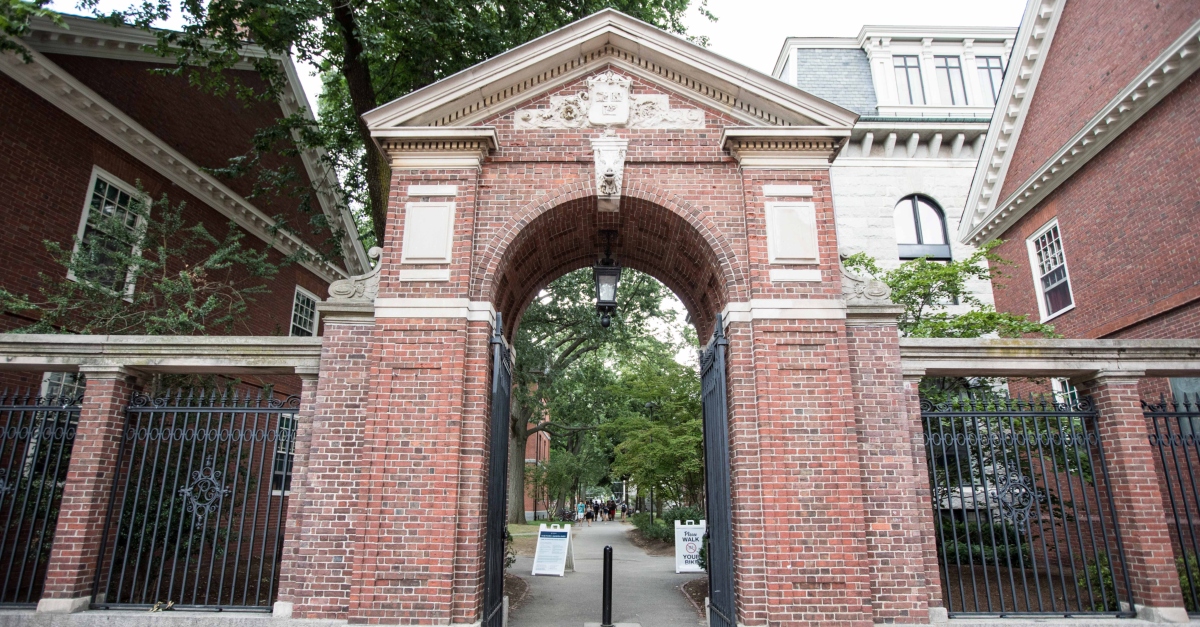
A federal court of appeals on Thursday ruled that Harvard University’s use of affirmative action during the admissions process is not a violation of the Civil Rights Act of 1964.
But a Supreme Court majority appointed by Republicans is waiting in the wings and could make quick work of the decision.
“The issue before us is whether Harvard’s limited use of race in its admissions process in order to achieve diversity in the period in question is consistent with the requirements of Supreme Court precedent,” the First Circuit Court of Appeals concluded in a 104-page opinion and order. “There was no error.”
The case was initiated by the group Students for Fair Admissions (SFFA), which was founded by three white people in order to putatively complain about the rights of Asian Americans denied admission to the nation’s oldest institution of higher learning.
SFFA claims that Harvard’s use of affirmative action is out of line with U.S. Supreme Court precedent on the use of race in the admissions process. Specifically, the plaintiffs argue that the university’s use of so-called “tips” for applicants based on their race is not allowed under current interpretations of Title VI of the Civil Rights Act.
“[Harvard] admits that race can be considered during [the] ‘first read’ of application materials only when assigning an applicant’s overall rating,” Judge Sandra Lynch explains–describing just a few steps of Harvard’s six-step application process. “It also admits that an applicant’s race can be considered in both subcommittee and full committee meetings. Harvard denies that race is considered in assigning an applicant’s personal rating during the ‘first read.'”
The opinion details how these tips work:
Admissions officers are provided, from time to time, with summaries containing demographic information. These “one-pagers” provide a snapshot of various demographic characteristics of Harvard’s applicant pool and admitted class and compares them to the previous year. In addition to race, these sheets summarize the applicant pool on a variety of other dimensions (e.g., gender, geographic region, intended concentration, legacy status, whether a student applied for financial aid, etc.). Information from this sheet is periodically shared with the full admissions committee, and the committee uses this information in part to ensure that there is not a dramatic drop-off in applicants with certain characteristics — including race — from year to year.
“Harvard keeps abreast of the racial makeup of its admitted class in part because doing so is necessary to forecast yield rates,” Lynch continues. “The yield rate is the percent of admitted applicants who accept an offer of admission. Empirically, Asian American and white students accept offers of admission at higher rates than African American, Hispanic, Native American, and multiracial applicants.”
Notably, tips are also used to benefit and boost the applications of athletes, legacy applicants, potential students that deans have their eyes on and the children of Harvard faculty and staff. Such applicants are vastly whiter than Harvard’s overall applicant pool–but like the typical applicant pool the second group of would-be students is also disproportionately Asian.
Advocates for Harvard’s use of race in the admissions process have long noted that the university’s leg up for legacy students and others in the second category is typically far more determinative of admission than normal student applicants. Harvard itself, since before the U.S. Civil War, has long stressed a commitment to various forms of diversity in its student body, the court notes.
Under the Supreme Court’s current understanding of Title VI as it relates to the validity of affirmative action programs, considering the use of race during admissions is prohibited “unless the admissions process can withstand strict scrutiny.”
Strict scrutiny is the highest level of judicial review in the United States and use of the analytical framework is oftentimes a foregone conclusion that the activity under the judicial microscope is unconstitutional. That is, however, in rare instances, not always the case. In order for a program or law to survive a strict scrutiny analysis, the defending party must show that their actions serve a compelling governmental interest.
“The Supreme Court has held that attaining student body diversity may be a compelling interest,” Judge Lynch notes. “Whether an asserted interest in diversity is a constitutionally acceptable compelling interest requires that a university have made certain showings. And even once those showings are made, the university must also show that the means utilized to further that interest are narrowly tailored, which means that the university must make additional showings.”
In the end, due in large part to a 2013 report by Dean Rakesh Khurana which documented and assessed “whether Harvard’s interest [in diversity] was sufficiently compelling to comply with strict scrutiny and Supreme Court precedent,” the First Circuit found Harvard’s affirmative action program was compliant with a strict scrutiny analysis and that they had made the additional showings necessary.
“Harvard has identified specific, measurable goals it seeks to achieve by considering race in admissions,” the court found. “These goals are more precise and open to judicial scrutiny than the ones articulated by the University of Texas and approved by the Fisher II majority. Harvard’s interest in diversity is established both by the Khurana Report and other statements and testimony at trial.”
The university praised the court’s decision in a statement.
“As we have said time and time again, now is not the time to turn back the clock on diversity and opportunity,” spokesperson Rachael Dane said.
But the victory for Harvard–and affirmative action in general–could very well be exceedingly short-lived.
Legal experts widely anticipate the newly emboldened conservative majority on the nation’s high court to accept SFFA’s petition for writ of certiorari and revisit their recent decisions on the issue.
1st Cir. rules for Harvard in affirmative action case. In light of deference owed the dist ct’s factual findings, this seems clearly correct under current case law. Only reason for cert is if SCOTUS wants to change current case law. I therefore fully expect cert. https://t.co/OmFa37QnuT
— Jamal Greene (@jamalgreene) November 12, 2020
[image via Scott Eisen/Getty Images]